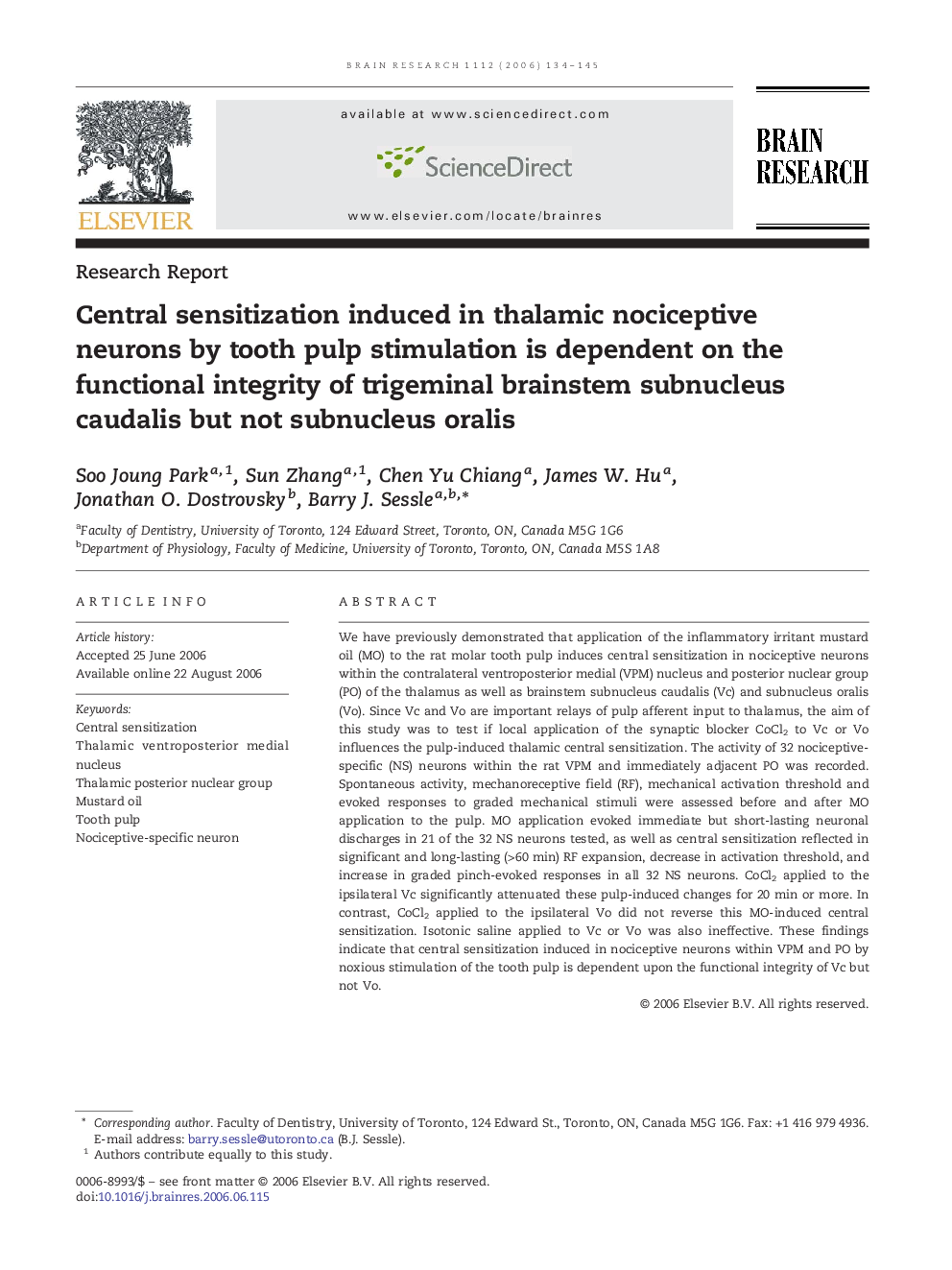| Article ID | Journal | Published Year | Pages | File Type |
|---|---|---|---|---|
| 4332266 | Brain Research | 2006 | 12 Pages |
We have previously demonstrated that application of the inflammatory irritant mustard oil (MO) to the rat molar tooth pulp induces central sensitization in nociceptive neurons within the contralateral ventroposterior medial (VPM) nucleus and posterior nuclear group (PO) of the thalamus as well as brainstem subnucleus caudalis (Vc) and subnucleus oralis (Vo). Since Vc and Vo are important relays of pulp afferent input to thalamus, the aim of this study was to test if local application of the synaptic blocker CoCl2 to Vc or Vo influences the pulp-induced thalamic central sensitization. The activity of 32 nociceptive-specific (NS) neurons within the rat VPM and immediately adjacent PO was recorded. Spontaneous activity, mechanoreceptive field (RF), mechanical activation threshold and evoked responses to graded mechanical stimuli were assessed before and after MO application to the pulp. MO application evoked immediate but short-lasting neuronal discharges in 21 of the 32 NS neurons tested, as well as central sensitization reflected in significant and long-lasting (> 60 min) RF expansion, decrease in activation threshold, and increase in graded pinch-evoked responses in all 32 NS neurons. CoCl2 applied to the ipsilateral Vc significantly attenuated these pulp-induced changes for 20 min or more. In contrast, CoCl2 applied to the ipsilateral Vo did not reverse this MO-induced central sensitization. Isotonic saline applied to Vc or Vo was also ineffective.These findings indicate that central sensitization induced in nociceptive neurons within VPM and PO by noxious stimulation of the tooth pulp is dependent upon the functional integrity of Vc but not Vo.
